Featured Articles
I Like Roy Jones To Beat Floyd Mayweather
 During a recent interview, Roy Jones Jr claimed that Manny Pacquiao would be a tougher task for him than Floyd Mayweather. Jones, a former four weight world champion [middleweight, super middleweight, light heavyweight and heavyweight], claimed that if weight, size and age were in line, he would have the perfect style to neutralise Floyd Mayweather. Manny Pacquiao's style however, he said, would be far more difficult for him to crack.
During a recent interview, Roy Jones Jr claimed that Manny Pacquiao would be a tougher task for him than Floyd Mayweather. Jones, a former four weight world champion [middleweight, super middleweight, light heavyweight and heavyweight], claimed that if weight, size and age were in line, he would have the perfect style to neutralise Floyd Mayweather. Manny Pacquiao's style however, he said, would be far more difficult for him to crack.
“The young Roy Jones, would probably beat Floyd Mayweather, because basically Mayweather has the same style as James Toney. My style is different to theirs. But when you come back and start talking about Manny Pacquiao, he's a whole different animal. He's a southpaw who throws bombs. You've got to survive his power first, then you deal with him. That's still left to be seen. Of course with my size I'll beat him, but if I was in his weight class, that would be a good fight to see, ” said Jones.
So how would hypothetical contests involving Roy Jones and Floyd Mayweather and Manny Pacquiao actually look then?
Part 1. Roy Jones versus Floyd Mayweather
By claiming that Mayweather has the same style as Toney, Jones is insinuating that Mayweather, a counterpuncher like Toney, would be using a lot of upper body movement to evade punches. Jones is also aware that both Toney and Mayweather share the same defensive shell – chin tucked in behind their left shoulder- which they like to roll and counter from. During their fight in 1994, Jones was able to use his speed and movement to neutralise Toney's defense. Jones' style was very much his own during his prime. Using his legs, Jones always kept the fight at his distance. Often backing up, Jones would lure his opponent in, then attack in lightning quick bursts. This style proved to be Toney's downfall. By feinting Toney into his defensive shell, Jones, using his superior footwork, was able to step around Toney and attack from a variety of different angles. Because he stood flat footed and because of Jones' hand and foot speed advantage, Toney was unable to adjust.
While there are obvious similarities between Mayweather and Toney, there are also some differences.
Firstly, Mayweather, like Jones used to be, is a rare athletic talent blessed with A+ handspeed and reflexes. As a result, Mayweather can afford to rely on physical gifts, as well as craft, whereas Toney – who possessed decent hand speed early in his career – relied purely on technique. Secondly, Mayweather's foot speed, while not as fast as it once was, is still very quick. Toney on the other hand, was often exposed in the footspeed department. As a result of his tendency to over do his defense, Toney would often go long periods without letting his hands go, whereas Mayweather's transition from defense to offense was seamless. Mayweather's defense is there to set up his offense.
Personally, I feel Roy Jones would have the stylistic advantage over Floyd Mayweather. By evidence, Mayweather always looked better against aggressive types who chose to press the attack, rather than sit back [Corrales, Gatti and Hatton]. Likewise, prime Jones also looked good when he allowed his opponent to be the aggressor [Pazienza, Brannon and Ruiz]. However, some of Jones' best wins came against supreme ring technicians, albeit some of them were past their prime [Toney, Hopkins, Hill, Mccallum and Reggie Johnson.]
It's difficult to tell who had the faster hands of the two. Jones threw more power shots at speed, whereas Floyd threw his jab more. Because Jones was the larger of the two, and was carrying more weight, I’d say Jones had the faster hands in a pound for pound sense. While there's not much to separate them in terms of hand speed, the superior footspeed belongs to Jones. Jones could move around the ring quicker than any fighter I've ever seen.
While both fighters are essentially defensive minded fighters, Roy should be considered the more offensive minded of the two as he would often take more risks when attacking than Floyd. As a result, Mayweather is deemed a more cautious fighter than Prime Jones was. Mayweather prefers to throw one punch at a time, primarily the straight right hand, which he only allows to be released with any frequency once his opponents’ primary weapon is taken away. Jones' primary weapon was his mobility. In order for Floyd to take Roy's mobility away, he would have to fight a far more aggressive fight than he is accustomed to. Mayweather would have to be more aggressive and try and cut the ring off.
Look at Jean Pascal against Chad Dawson, which is a similar matchup stylistically. Dawson was forced into taking the lead against Pascal, who, because of his in and out style of boxing, had Dawson on the defensive every time he leapt in with his combinations.
A defensive counterpuncher will always struggle with unpredictable, sporadic offense.
By being out of range, and launching an ambush, you are surprising the counterpuncher, hence his first motion will be to cover up and defend. In theory, if the counterpuncher does not know what type of attack is coming next, you are in essence giving him nothing to counter.
No doubt, Mayweather is the superior technician of the two, but it's hard to see past Mayweather's low risk taking. Jones on the other hand would place a lot more emphasis on offense. Roy would be throwing his combinations whilst moving. As a result, his attack would be very creative and unpredictable. Jones could lead with hard and fast left hooks to the body followed by a right hand up top or vice versa. If Mayweather chose to press the attack, Jones would be backing up, then leap in at every angle imaginable. Mayweather, a counterpuncher, would be spending too much time trying to evade Jones’ offense, namely his left hook lead, as opposed to attempting to initiate his own.
Technically, Floyd is the better defender. His ability to block, slip and counter in close is breathtaking. Yet ask yourself this; Who have you seen hit with the cleaner shots, Roy Jones from 1994-2004? Or Floyd Mayweather from 1999 until present day?
It's easy to forget just how good Roy Jones actually was defensively. We did not know how bad Jones' chin was, as a direct result of his legs being so good. His legs, as opposed to Mayweather's upper body, were HIS defense. During his prime, I cannot name a single occasion where I saw Jones hit clean, let alone hurt, whereas Floyd Mayweather has been hit clean and hurt on numerous occasions during his best years [Castillo, Corley and Mosley].
If I had to pick an area in which Mayweather would have the significant advantage, it would have to be in close. I regard Floyd Mayweather as the best inside fighter in boxing at the moment. Just like when Pernell Whitaker proved he was better than Julio Cesar Chavez in close during their bout, Floyd Mayweather proved his inside mastery during his undressing of formidable inside fighter Ricky Hatton. While Jones was no slouch on the inside, it is this area where his best asset, his legs, would be ineffective, and Mayweather's best asset, his technical skills, would be very effective. If the fight was fought in the pocket, in a conventional way, like Kalambay versus McCallum or Barrera versus Juan Manuel Marquez, then I'd favour Floyd.
Unfortunately for Floyd, this would not be the destination of the action.
On a personal note, my favourite fighter of all time is Roberto Duran. Apart from being one of the best aggressors in boxing history, I also think he was one of the best ring technicians ever. In his first fight with Ray Leonard, Duran dominated the action with his superior craft in close. Leonard could not match him in the skills department. His handspeed was nowhere to be seen. Contrast this fight with the rematch, and you see an entirely different fight. Duran's superior technical skills were rendered useless by Leonard's foot speed and movement. Duran could not get close enough to Leonard in order to do what he did best.
While the disparity in foot speed would not be as huge as it was between Leonard and Duran, there would be enough of it in Jones' favour to take a lot of Mayweather's best work away from him. Opponents that stand in front of Floyd, like Gatti, Mosley and even Juan Manuel Marquez [uncharacteristically in their fight] will get eaten up by his vast spectrum of skills. From a pure boxing perspective, there have not been many better, if any, than Floyd Mayweather.
However, Roy Jones was arguably the most unique talent in boxing history. He had the boxing brain to maximise his athletic talent, which resulted in Jones' style being very hard to decipher. Yes, Sergio Martinez has a similar sort of style to Jones, and yes, I'd pick Floyd Mayweather over Martinez at 154 if ever they decide to face each other.
Again, ask yourself, could you see Roy Jones struggling with Matthew Macklin the way Martinez did? Neither can I.
Consequently, I would have to agree with Roy Jones' assumption that he would hold the advantages over Floyd Mayweather, both physically and stylistically.
Mayweather is a tremendous talent, a fighter whose style translates to more longevity than that of Jones'. Once Jones' other-worldly speed of hand and more importantly, speed of foot had diminished, he did not have the technical skills to fall back on, whereas once Mayweather's physical gifts fade, an all time great defensive skill set will see him ok.
But when it comes to both fighters at their best, for my money, Roy Jones Jr, would have proved to be better than Floyd Mayweather.
Part 2 [ Jones versus Pacquiao] coming soon….
-
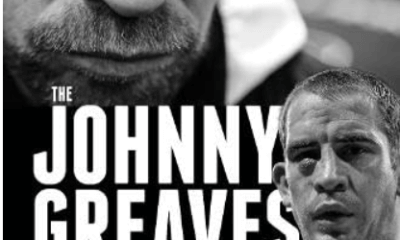
 Featured Articles3 weeks ago
Featured Articles3 weeks agoThomas Hauser’s Literary Notes: Johnny Greaves Tells a Sad Tale
-
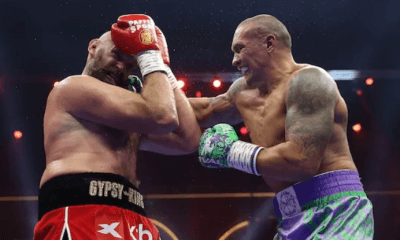
 Featured Articles2 weeks ago
Featured Articles2 weeks agoBoxing Notes and Nuggets from Thomas Hauser
-
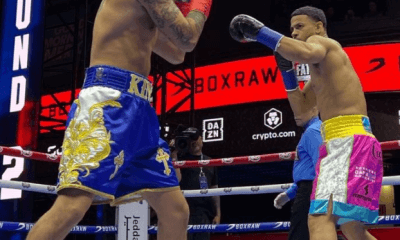
 Featured Articles4 weeks ago
Featured Articles4 weeks agoRolly Romero Upsets Ryan Garcia in the Finale of a Times Square Tripleheader
-
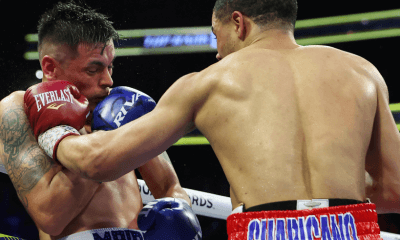
 Featured Articles4 weeks ago
Featured Articles4 weeks agoUndercard Results and Recaps from the Inoue-Cardenas Show in Las Vegas
-
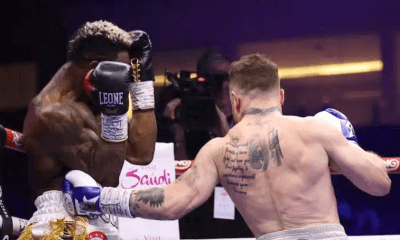
 Featured Articles4 weeks ago
Featured Articles4 weeks agoCanelo Alvarez Upends Dancing Machine William Scull in Saudi Arabia
-
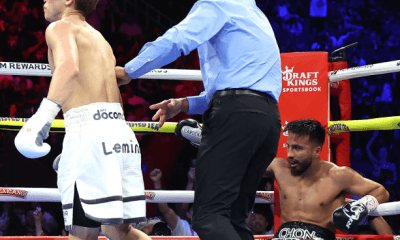
 Featured Articles4 weeks ago
Featured Articles4 weeks agoBombs Away in Las Vegas where Inoue and Espinoza Scored Smashing Triumphs
-
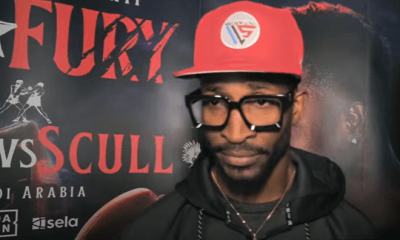
 Featured Articles4 weeks ago
Featured Articles4 weeks agoArne’s Almanac: The Good, the Bad, and the (Mostly) Ugly; a Weekend Boxing Recap and More
-
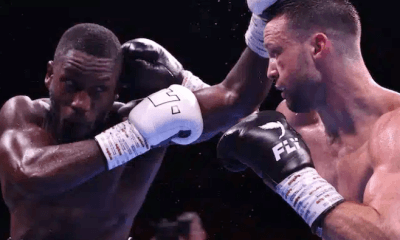
 Featured Articles1 week ago
Featured Articles1 week agoEkow Essuman Upsets Josh Taylor and Moses Itauma Blasts Out Mike Balogun in Glasgow



















